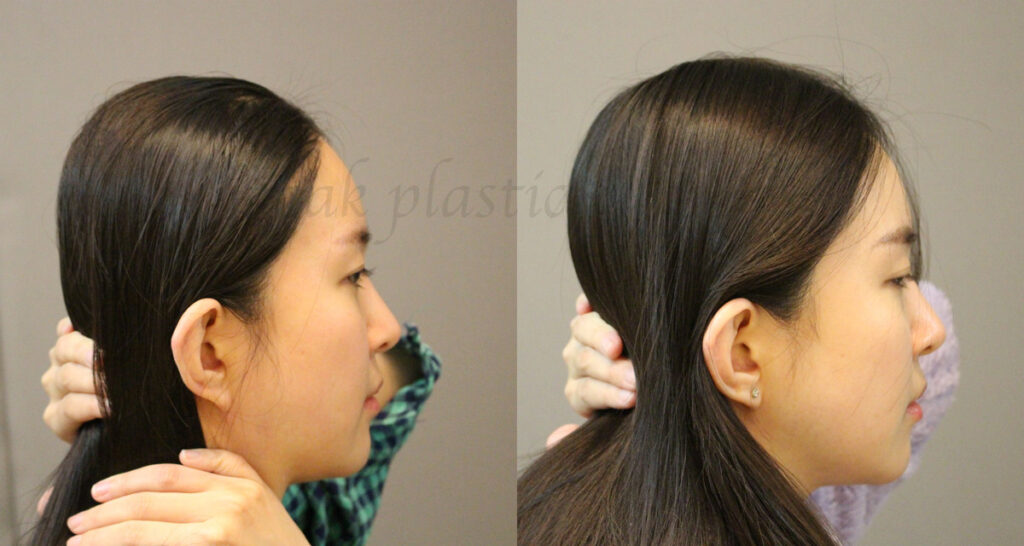Aesthetic sugery of the Head

Open the toggle to see more details.
Aesthetic or cosmetic surgery of parts of the head (aesthetic cranioplasty) means the shaping of parts of the head such as the forehead, the back of the head (the occiput), and the top of the head (the vertex). Aesthetic surgery by augmentation is a permanent surgical method which involves inserting implant material such as bone cement, into the forehead, the back of the head, and the top of the head where areas are depressed, too flat, uneven, or where the overall facial shape is unpleasantly imbalanced (asymmetrical). In such cases the head is reformed into a pleasing well contoured shape which is in harmony with the overall facial contour.
The material we use in our clinic is acrylic bone cement (a kind of synthetic bone), usually referred to by the generic name Methyl Methacrylate (Polymethylmethacrylate), or simply MMA (PMMA) and is FDA approved as a safe implant material for plastic and aesthetic surgery. MMA has been used by plastic surgeons since the 1960s for reconstructing the forehead and other parts of the head and body. It gives a natural skull shape and feel, is as strong as bone, and retains its position and shape permanently.
Our plastic surgery clinic uses bone cement (methyl methacrylate), a safe implant material. The cement we use is a material approved in major countries such as Korea and the United States.

Augmentation
Click the tap to see more details.
- Before and after an operation examples

- Before and after an operation examples

- Before and after an operation examples

Open the toggle to see more details.
- Before the operation you will receive a consultation about your current head shape and we will advise if the operation can be performed and be effective for you.
- Photographs of your head will be taken and the expected shape of your head will be explained with before and after photographs of other cases.
- You need to inform us if you are taking medications and we will advise you how to prepare before the operation.
- Prior to surgery, the hair is thoroughly cleansed and then tied into several bundles so that it does not obscure the area of the incision or interfere with the surgery. Shaving of the head is not required.
- Intravenous sleeping medication (sedatives) and lidocaine local anesthetics are given; there is no need for general anesthesia.
- A small V-shaped (about 5 cm long) incision is made on the scalp and the skin is gently separated.
- The MMA, which is the consistency of putty at this point, is inserted into the desired location of the head through the incision. Using the fingers, the surgeon carefully molds the soft MMA into the desired shape while it hardens. This part of the procedure takes about 2 minutes.
- Then the scalp incision is closed with absorbable sutures and surgical staples, bandaged and then covered by a pressure dressing.
- The entire operation from hair cleansing to bandaging generally takes 40 to 50 minutes.
The day of surgery ;
Since the surgery is performed on an outpatient basis, it allows you to return home the same day.
The bandage and pressure dressing about the head is needed to be worn for only two to three days. After the surgery, some pain and tightness around the head may exist but is minimal and mild pain medication controls these symptoms. You will receive a prescription for seven days of antibiotics and mild pain medication.
After forehead or vertex augmentation some bruising and swelling can be expected but usually all bruising and swelling will disappear in one week. Usually, bruising or swelling is rare after occiput augmentation.
Two days after surgery ;
The bandage and pressure dressing will be removed in our clinic, and the surgical site will be cleaned and carefully examined.
Four days after surgery ;
You should wash your hair and then visit our clinic for another examination. Normally there is no other procedure performed at this point. You can shampoo normally from this point.
About 10 days after surgery ;
A careful final examination will be performed and the surgical staples will be removed. Photographs will then be taken so you can clearly see the before and after result.
There could be some slight discomfort, pain and tightness around the head. They are generally minimal and will disappear within one week. Some swelling may occur due to hematoma but normally disappears within two to three weeks and does not reoccur. Infection may occur, but there have been no cases of infections and no other cases of significant side effects. Also, there have been no long-term complications such as implant problems (infection), skull or scalp issues.